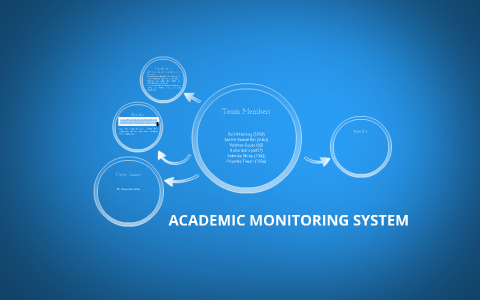Academic monitoring refers to the ongoing process of tracking students’ academic performance, progress, and growth over time. By closely observing how students are doing in their studies, we can provide timely support, make data-driven decisions, and ultimately improve student outcomes.
I’ve seen firsthand how effective academic monitoring can be in boosting student success. When done right, it not only helps students stay on track but also empowers educators to make informed interventions that foster long-term growth. In this article, we’ll explore what academic monitoring is, how it works, and how you can use it to improve student results.
What is Academic Monitoring?

Defining Academic Monitoring and Its Purpose
Academic monitoring is the process of regularly assessing and tracking students’ academic progress to ensure they meet specific learning objectives and standards. It involves gathering data from assessments, assignments, and other academic indicators to evaluate how well students are performing. This data helps educators identify patterns, strengths, and areas for improvement, enabling them to take proactive steps to support students in reaching their academic goals.
Unlike traditional assessments that might only capture a student’s performance at a single point in time, academic monitoring is a continuous process. This ongoing approach allows teachers to identify challenges early on and intervene before small issues become bigger problems. It also provides a more accurate picture of a student’s abilities and learning needs, which is crucial for improving outcomes.
The ultimate goal of academic monitoring is to improve student performance. By providing timely feedback, offering interventions, and adjusting teaching strategies, educators can help students achieve better results and stay engaged in their learning journey.
Why Academic Monitoring is Essential for Student Success
The Impact of Academic Monitoring on Learning
Effective academic monitoring plays a vital role in improving student results. Here are a few reasons why it’s so crucial for student success:
-
Early Detection of Struggles: Through regular monitoring, teachers can quickly identify students who are struggling with specific concepts or assignments. This early identification allows for quicker intervention, preventing students from falling behind.
-
Personalized Support: Academic monitoring enables educators to tailor their approach to each student’s needs. Whether a student needs extra help in math, reading, or study skills, monitoring provides the data necessary to provide focused and individualized support.
-
Data-Driven Decisions: With continuous monitoring, teachers can base their decisions on objective data rather than assumptions. This allows for a more accurate understanding of each student’s academic journey, ensuring that interventions and adjustments are relevant and effective.
-
Increased Student Engagement: When students see that their progress is being tracked and that their teachers are invested in their success, they are more likely to feel motivated and engaged. Positive reinforcement and regular feedback keep students focused on their goals.
How to Use Academic Monitoring Effectively
Key Strategies for Implementing Academic Monitoring in the Classroom
Implementing an effective academic monitoring system requires thoughtful planning, consistency, and the use of the right tools. Below are some strategies to ensure that academic monitoring is used effectively to improve student results:
1. Set Clear Goals and Expectations
Before you can monitor progress, it’s important to define clear academic goals and expectations. What are the learning objectives for each student? What benchmarks should students meet? Setting measurable and achievable goals helps provide direction for both teachers and students. It also provides a baseline for tracking progress.
For example, in a math class, you might set goals around mastering specific mathematical concepts or improving test scores. These goals should be communicated clearly to students so they understand what they need to achieve and how their progress will be assessed.
2. Use Formative Assessments
Formative assessments are ongoing, low-stakes assessments that allow you to monitor students’ progress regularly. These assessments can take many forms, such as quizzes, polls, short writing assignments, and interactive class activities. The key is that formative assessments give you frequent, actionable data on how students are learning and where they need additional support.
In my own experience, formative assessments have been invaluable in identifying learning gaps before they become major issues. They allow teachers to adjust lessons or provide additional resources in real-time, creating a more dynamic and responsive classroom environment.
3. Track Student Progress Over Time
Consistency is key when it comes to academic monitoring. Use tools like spreadsheets, gradebooks, or learning management systems (LMS) to track student progress over time. By documenting assessments, assignments, and other data points, you can spot trends in a student’s performance and adjust instruction accordingly.
This ongoing tracking helps identify whether students are improving, stagnating, or falling behind. For example, if a student’s performance is consistently declining, you can investigate whether it’s due to specific academic challenges, lack of engagement, or external factors, and intervene appropriately.
4. Provide Timely Feedback
Feedback is one of the most important aspects of academic monitoring. It not only helps students understand what they’re doing well but also guides them in areas where they can improve. Timely feedback, given soon after an assessment or activity, is much more effective than feedback delivered weeks later.
When you provide feedback, focus on being specific, constructive, and encouraging. Offer suggestions for improvement and actionable next steps. Positive reinforcement, along with areas for growth, helps keep students motivated and focused on their learning journey.
5. Involve Students in the Process
One of the most effective ways to use academic monitoring is to involve students in the process. Encourage self-reflection by having students track their own progress, set personal goals, and review their performance on assessments. This helps foster ownership of their learning and allows them to become active participants in their academic success.
Involving students in the monitoring process can be as simple as giving them access to their grades or assessments, encouraging them to ask questions about areas they don’t understand, or having them set goals for improvement. This promotes accountability and makes students more invested in their educational outcomes.
Addressing Challenges in Academic Monitoring
Overcoming Common Obstacles
While academic monitoring is a powerful tool, it does come with challenges. Here are some common obstacles and how to overcome them:
-
Time Constraints: Regular monitoring requires time, and teachers often have packed schedules. One way to overcome this is by incorporating formative assessments into daily activities, making it easier to gather data without extra preparation time. Additionally, using digital tools can streamline the process of tracking and analyzing student progress.
-
Data Overload: With all the data collected, it can be overwhelming to analyze and interpret everything. Prioritize the most important metrics, such as grades, participation, and key learning objectives. Use data visualization tools or dashboards to simplify the process and identify trends more easily.
-
Ensuring Equity: It’s important to ensure that all students are being monitored equitably. Avoid overemphasizing certain aspects of a student’s performance, such as test scores, without considering other factors like effort, participation, and improvement. Academic monitoring should give a holistic view of each student’s abilities and needs.
The Benefits of Academic Monitoring
Long-Term Positive Impact on Student Success
When implemented correctly, academic monitoring has a range of benefits for students and educators:
-
Early Identification of Struggles: Monitoring allows teachers to identify issues early, preventing small academic struggles from becoming larger problems. This leads to better outcomes for students who might otherwise fall behind.
-
Personalized Instruction: Academic monitoring helps identify which teaching strategies are working and which aren’t. It enables educators to personalize their instruction, ensuring that every student receives the support they need.
-
Increased Student Engagement: Students who see their progress being tracked and receive timely feedback tend to feel more motivated and engaged. They are more likely to take responsibility for their learning and make the necessary efforts to improve.
-
Data-Driven Interventions: With clear, objective data, interventions can be tailored to meet each student’s needs. Teachers can adjust lesson plans, offer additional resources, or provide one-on-one support to ensure students succeed.
Conclusion: Using Academic Monitoring for Improved Student Results
Academic monitoring is an essential tool for fostering student success. By tracking progress, identifying challenges, and offering timely support, educators can help students reach their full potential knowledge. Regular monitoring enables data-driven decisions that lead to personalized interventions, increased engagement, and better outcomes.
As teachers, it’s important to embrace the power of academic monitoring to create a learning environment where students feel supported, valued, and motivated to succeed. With the right approach and consistent effort, academic monitoring can be a key driver of positive academic results and long-term success for every student.



